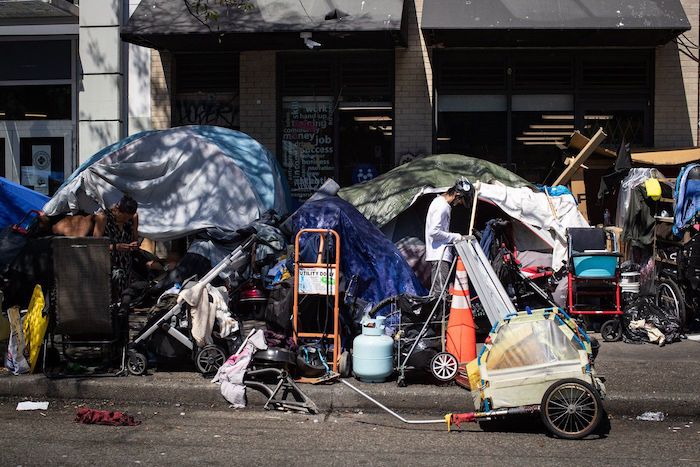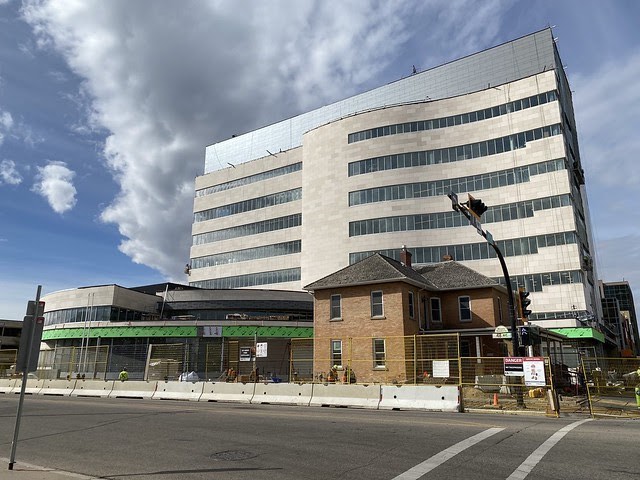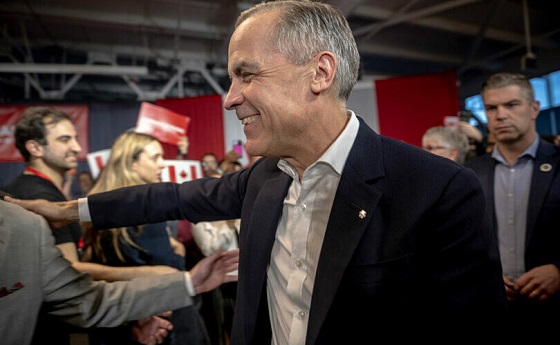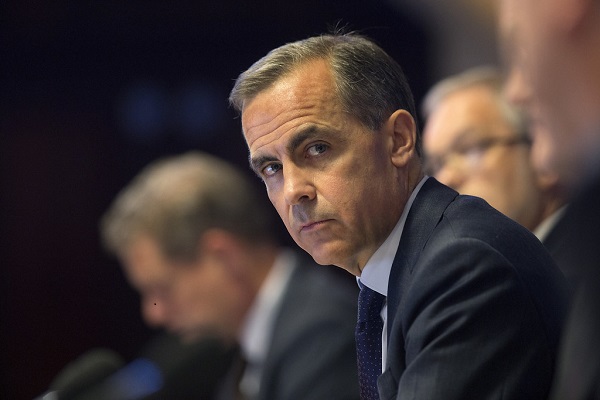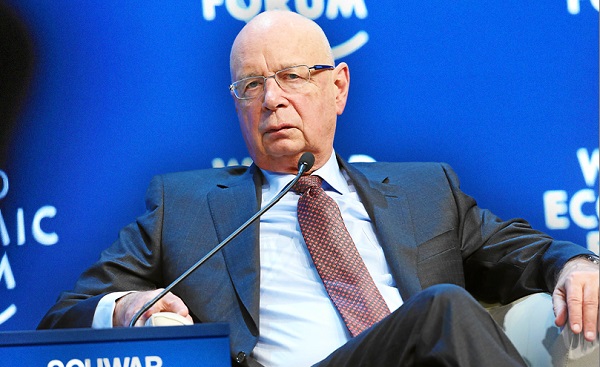Alberta
Dr. Deena Hinshaw says Alberta is flattening the curve

It’s official. The province’s chief medial health officer believes Albertans are flattening the curve. In her daily COVID-19 update, Dr. Deena Hinshaw was asked if Albertans are flattening the curve and she confirmed that appears to be the case as the numbers of new cases are noticeably lower than they have been and they’ve been that way for days now. Since May 2, there have been less than 100 new cases a day. You can hear this exchange in the Q and A session right after Dr. Hinshaw’s statement.
Update from the province
Recovered cases make up more than half of Alberta’s cases of COVID-19 at 3,552.
Seventy new cases have been reported, bringing the total number to 5,963.
Six more Albertans have died.
Latest updates
- Cases have been identified in all zones across the province:
- 4,003 cases in the Calgary zone
- 1,111 cases in the South zone
- 503 cases in the Edmonton zone
- 229 cases in the North zone
- 91 cases in the Central zone
- 26 cases in zones yet to be confirmed
- Of these cases, there are currently 82 people in hospital, 19 of whom have been admitted to intensive care units (ICU).
- 730 cases are suspected of being community acquired.
- The total deaths are 112: 79 in the Calgary zone; 15 in the North zone; 12 in the Edmonton zone; five in the South zone; and one in the Central zone.
- To date, 632 cases have been confirmed at continuing care facilities, and 82 residents at these facilities have died.
- There have been 946 cases in workers from the Cargill meat processing plant in High River, with 798 recovered.
- There have been 566 cases in workers from JBS Foods Canada in Brooks, with 434 recovered.
- Thirty-eight cases have been confirmed at Harmony Beef since March and 12 have recovered.
- There have been 160,185 people tested for COVID-19 and a total of 170,509 tests performed by the lab. In the last 24 hours, 3,494 tests have been completed.
Here’s a graph from Alberta Health showing the growing gap between the active cases of COVID-19 and the recoveries. Within just a couple of days that gap between the number of recovered and the number of active cases has stretched to 1300.

That’s good news for hospitals. As you can see in this graph the number of hospitalizations is down significantly in every region of the province.

The number of cases in Red Deer is down to 4 now after another recovery. 2 more cases were diagnosed in the last 24 hours in Central Alberta. There are now 91 total cases in Central Zone. The new cases are in Vermillion County near Lloydminster and Mountain View County which includes Olds, Sundre, Didsbury, and Carstairs. There are 11 active cases in Central Alberta. Here is the breakdown
- Red Deer City – 36 cases – 4 active
- Red Deer County – 13 cases – 2 active
- Mountain View County – 7 cases – 2 active
- Vermilion River County – 4 cases – 2 active
- Clearwater County – 3 cases – 1 active
- Stettler County – 3 cases – 0 active
- Lacombe County – 3 cases – 0 active
- Ponoka County – 2 cases – 0 active
- Kneehill County – 2 cases – 0 active
- Camrose City – 2 cases – 1 death – 0 active
- Wetaskiwin City – 8 cases – 0 active
- Lacombe City – 2 cases – 0 active
- Beaver County – 2 cases – 0 active
- City of Lloydminster – 1 case – 0 active
- Camrose County – 1 case – 0 active
- Minburn County – 1 case – 0 active
- MD of Wainwright – 1 case – 0 active
And here are the total number of cases in Alberta.

Bruce Cockburn gives thumbs up to cover of perfect song for Mental Health Week
Alberta
Low oil prices could have big consequences for Alberta’s finances

From the Fraser Institute
By Tegan Hill
Amid the tariff war, the price of West Texas Intermediate oil—a common benchmark—recently dropped below US$60 per barrel. Given every $1 drop in oil prices is an estimated $750 million hit to provincial revenues, if oil prices remain low for long, there could be big implications for Alberta’s budget.
The Smith government already projects a $5.2 billion budget deficit in 2025/26 with continued deficits over the following two years. This year’s deficit is based on oil prices averaging US$68.00 per barrel. While the budget does include a $4 billion “contingency” for unforeseen events, given the economic and fiscal impact of Trump’s tariffs, it could quickly be eaten up.
Budget deficits come with costs for Albertans, who will already pay a projected $600 each in provincial government debt interest in 2025/26. That’s money that could have gone towards health care and education, or even tax relief.
Unfortunately, this is all part of the resource revenue rollercoaster that’s are all too familiar to Albertans.
Resource revenue (including oil and gas royalties) is inherently volatile. In the last 10 years alone, it has been as high as $25.2 billion in 2022/23 and as low as $2.8 billion in 2015/16. The provincial government typically enjoys budget surpluses—and increases government spending—when oil prices and resource revenue is relatively high, but is thrown into deficits when resource revenues inevitably fall.
Fortunately, the Smith government can mitigate this volatility.
The key is limiting the level of resource revenue included in the budget to a set stable amount. Any resource revenue above that stable amount is automatically saved in a rainy-day fund to be withdrawn to maintain that stable amount in the budget during years of relatively low resource revenue. The logic is simple: save during the good times so you can weather the storm during bad times.
Indeed, if the Smith government had created a rainy-day account in 2023, for example, it could have already built up a sizeable fund to help stabilize the budget when resource revenue declines. While the Smith government has deposited some money in the Heritage Fund in recent years, it has not created a dedicated rainy-day account or introduced a similar mechanism to help stabilize provincial finances.
Limiting the amount of resource revenue in the budget, particularly during times of relatively high resource revenue, also tempers demand for higher spending, which is only fiscally sustainable with permanently high resource revenues. In other words, if the government creates a rainy-day account, spending would become more closely align with stable ongoing levels of revenue.
And it’s not too late. To end the boom-bust cycle and finally help stabilize provincial finances, the Smith government should create a rainy-day account.
Alberta
Governments in Alberta should spur homebuilding amid population explosion
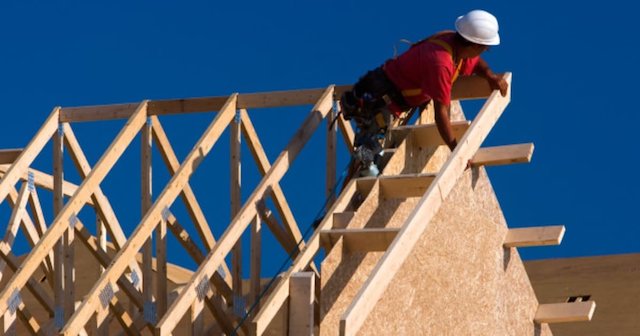
From the Fraser Institute
By Tegan Hill and Austin Thompson
In 2024, construction started on 47,827 housing units—the most since 48,336 units in 2007 when population growth was less than half of what it was in 2024.
Alberta has long been viewed as an oasis in Canada’s overheated housing market—a refuge for Canadians priced out of high-cost centres such as Vancouver and Toronto. But the oasis is starting to dry up. House prices and rents in the province have spiked by about one-third since the start of the pandemic. According to a recent Maru poll, more than 70 per cent of Calgarians and Edmontonians doubt they will ever be able to afford a home in their city. Which raises the question: how much longer can this go on?
Alberta’s housing affordability problem reflects a simple reality—not enough homes have been built to accommodate the province’s growing population. The result? More Albertans competing for the same homes and rental units, pushing prices higher.
Population growth has always been volatile in Alberta, but the recent surge, fuelled by record levels of immigration, is unprecedented. Alberta has set new population growth records every year since 2022, culminating in the largest-ever increase of 186,704 new residents in 2024—nearly 70 per cent more than the largest pre-pandemic increase in 2013.
Homebuilding has increased, but not enough to keep pace with the rise in population. In 2024, construction started on 47,827 housing units—the most since 48,336 units in 2007 when population growth was less than half of what it was in 2024.
Moreover, from 1972 to 2019, Alberta added 2.1 new residents (on average) for every housing unit started compared to 3.9 new residents for every housing unit started in 2024. Put differently, today nearly twice as many new residents are potentially competing for each new home compared to historical norms.
While Alberta attracts more Canadians from other provinces than any other province, federal immigration and residency policies drive Alberta’s population growth. So while the provincial government has little control over its population growth, provincial and municipal governments can affect the pace of homebuilding.
For example, recent provincial amendments to the city charters in Calgary and Edmonton have helped standardize building codes, which should minimize cost and complexity for builders who operate across different jurisdictions. Municipal zoning reforms in Calgary, Edmonton and Red Deer have made it easier to build higher-density housing, and Lethbridge and Medicine Hat may soon follow suit. These changes should make it easier and faster to build homes, helping Alberta maintain some of the least restrictive building rules and quickest approval timelines in Canada.
There is, however, room for improvement. Policymakers at both the provincial and municipal level should streamline rules for building, reduce regulatory uncertainty and development costs, and shorten timelines for permit approvals. Calgary, for instance, imposes fees on developers to fund a wide array of public infrastructure—including roads, sewers, libraries, even buses—while Edmonton currently only imposes fees to fund the construction of new firehalls.
It’s difficult to say how long Alberta’s housing affordability woes will endure, but the situation is unlikely to improve unless homebuilding increases, spurred by government policies that facilitate more development.
-

 2025 Federal Election2 days ago
2025 Federal Election2 days agoColumnist warns Carney Liberals will consider a home equity tax on primary residences
-

 2025 Federal Election1 day ago
2025 Federal Election1 day agoMark Carney: Our Number-One Alberta Separatist
-

 International2 days ago
International2 days agoJeffrey Epstein accuser Virginia Giuffre reportedly dies by suicide
-

 2025 Federal Election2 days ago
2025 Federal Election2 days agoNine Dead After SUV Plows Into Vancouver Festival Crowd, Raising Election-Eve Concerns Over Public Safety
-
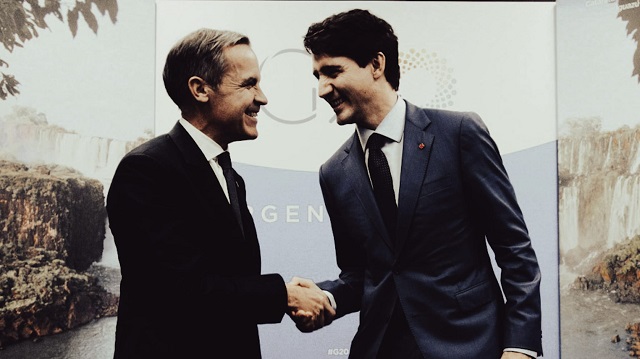
 2025 Federal Election1 day ago
2025 Federal Election1 day agoCanada is squandering the greatest oil opportunity on Earth
-

 Business23 hours ago
Business23 hours agoTrump demands free passage for American ships through Panama, Suez
-

 COVID-1912 hours ago
COVID-1912 hours agoFormer Australian state premier accused of lying about justification for COVID lockdowns
-

 International23 hours ago
International23 hours agoU.S. Army names new long-range hypersonic weapon ‘Dark Eagle’


